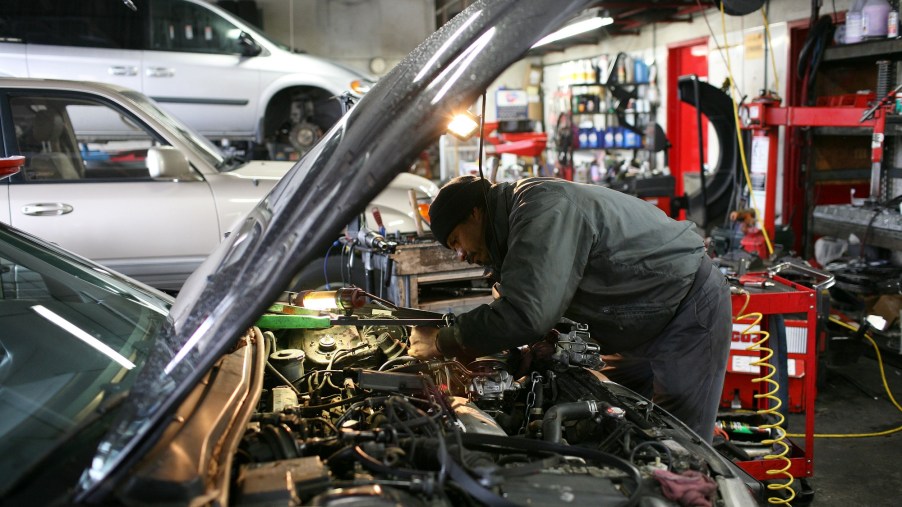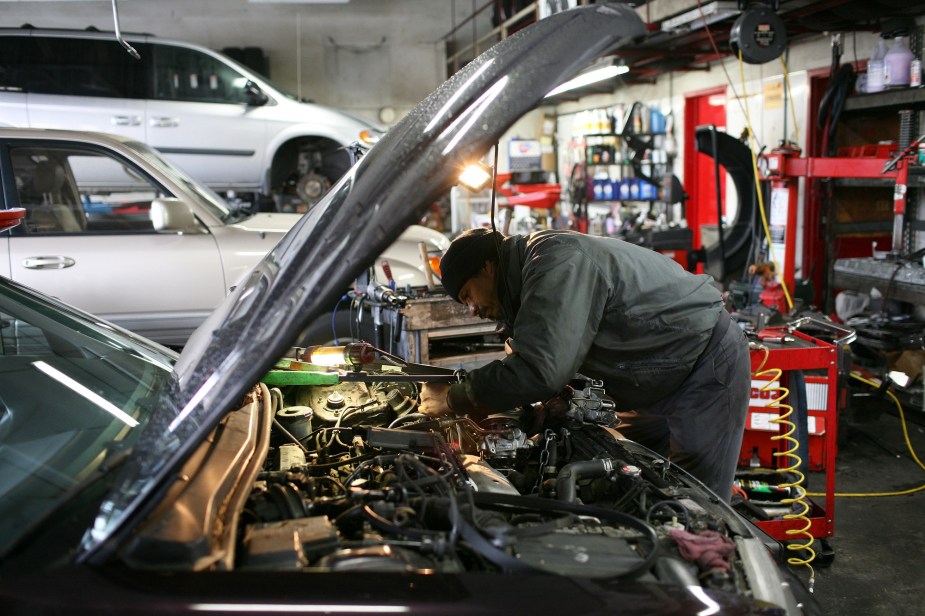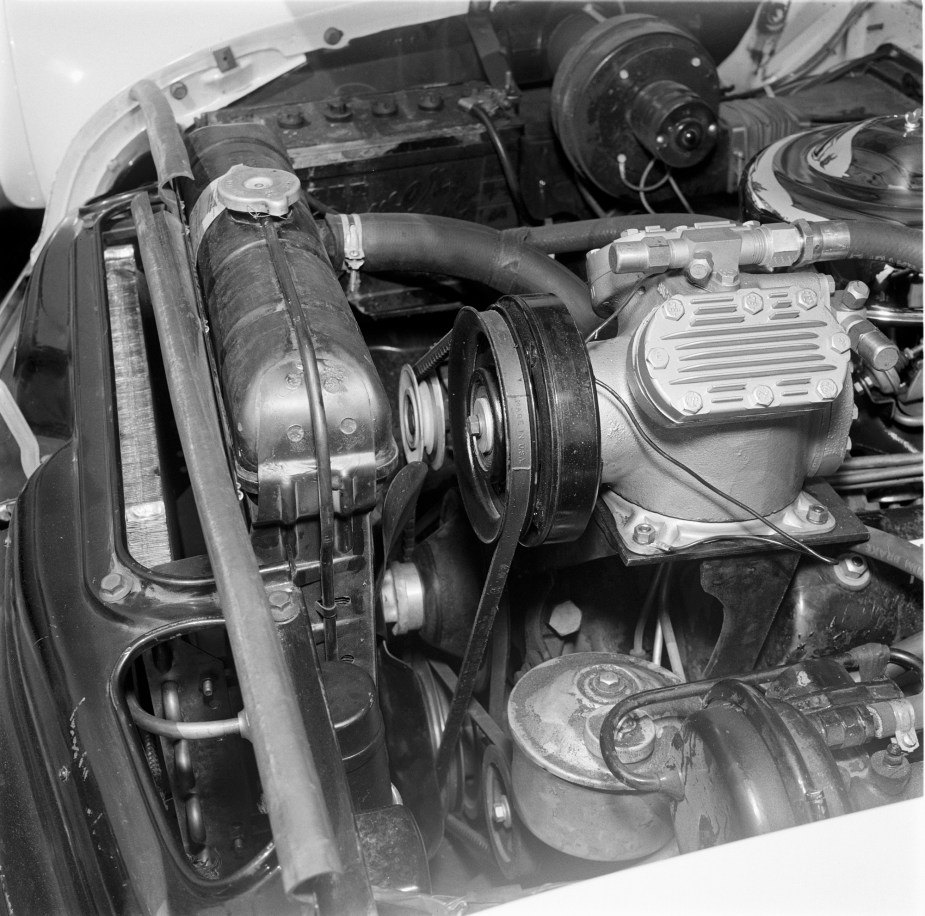
Got a Noisy, Squeaky Belt? Here’s What It Means
So it happened; your serpentine belt is a noisy, squeaky, even chirping soundtrack to your car’s drive. However, a squeaky belt doesn’t spell demise for your vehicle. Instead, it’s just another consumable component in your car that should be part of your regular maintenance. Here’s what a noisy, squeaky belt means and how you can remedy it.
What causes a squeaky belt?
Squeaky or chirping serpentine belts are caused by a number of factors, from inadequate tension to stretching to anti-freeze leaking onto your belt. However, not all sounds are the same. Family Handyman says belts can chirp, squeal, and signify different issues. For instance, a chirping belt could indicate a misalignment of the pulleys that drive your belt.

Furthermore, belt squeal can be the result of inadequate tension. A worn belt, the wrong belt, incorrect installation, or a faulty belt tensioner could cause inadequate belt tension and squeal. In either case, noisy, squeaky belts are an automotive irritation that could be an easy fix or an indication of a more expensive problem.
How do I make my belt stop squeaking?
The most straightforward approach to remedying a squeaky belt is with a lubricant, like a belt lube, dressing, or a more economical option like deodorant. However, Family Handyman advises against applying a lubricant, as it might lead to premature wear or belt failure. Instead, your first action should be to evaluate the belt and replace it. With appropriate tools, replacing a serpentine belt is a fairly straightforward task.
Then, if the chirping noises persist, your repair might include performing maintenance on your pulleys, brackets, or tensioners. Moreover, if squealing continues after you replace your belt, your belt could be installed improperly, or it could have fluid contamination. Either way, owners should ensure that the tensioner, idler wheels, and pulleys are in good working order.
How often should you replace belts?
A noisy, squeaky belt is a good indicator of a need for replacement. However, proactive car owners should replace belts before they reach that point. Consult your owner’s manual for maintenance intervals and recommendations. However, a good rule of thumb is to replace your vehicle’s belt every 60,000 to 100,000 miles.
Be on the lookout for missing belt chunks, cracks, and rounded ribbing in your belt. Moreover, Family Handyman recommends paying attention to spider web-esque cracking, as it might indicate impending failure.

What other regular maintenance should you remember?
In addition to remedying your squeaky belt, you should observe some regular maintenance measures. In terms of the obvious, performing regular oil changes, transmission fluid, brake maintenance, and replacing your air filter in a timely manner are essential. However, some maintenance musts slip owners’ minds. One of the most important measures is keeping up with tire health; modern tires significantly impact everything from traction to emergency braking.
Moreover, replacing and upgrading components like spark plugs and ignition coils can help fuel economy and engine health. Be sure to keep up with MotorBiscuit for all things automotive!



